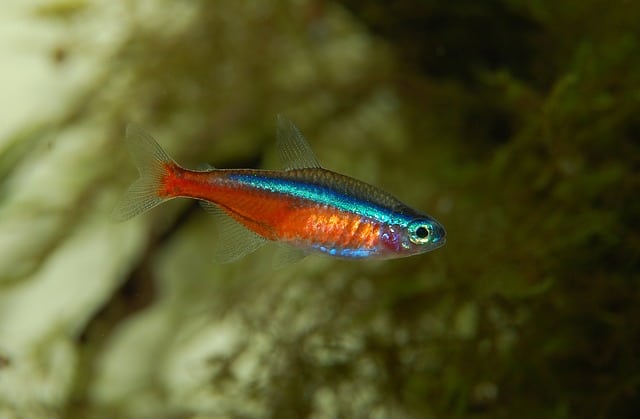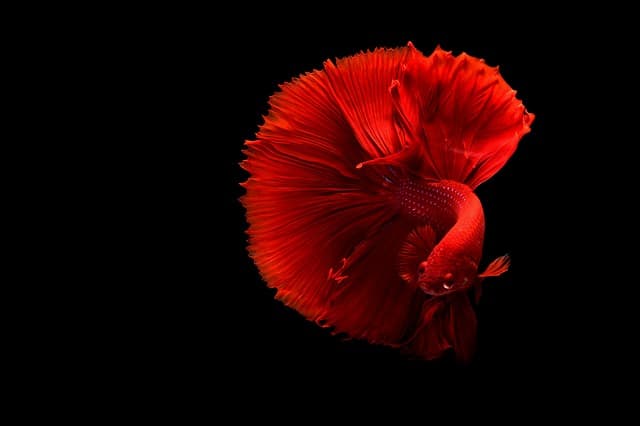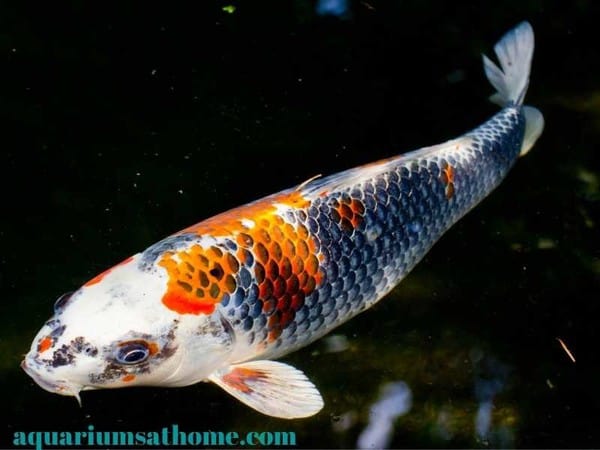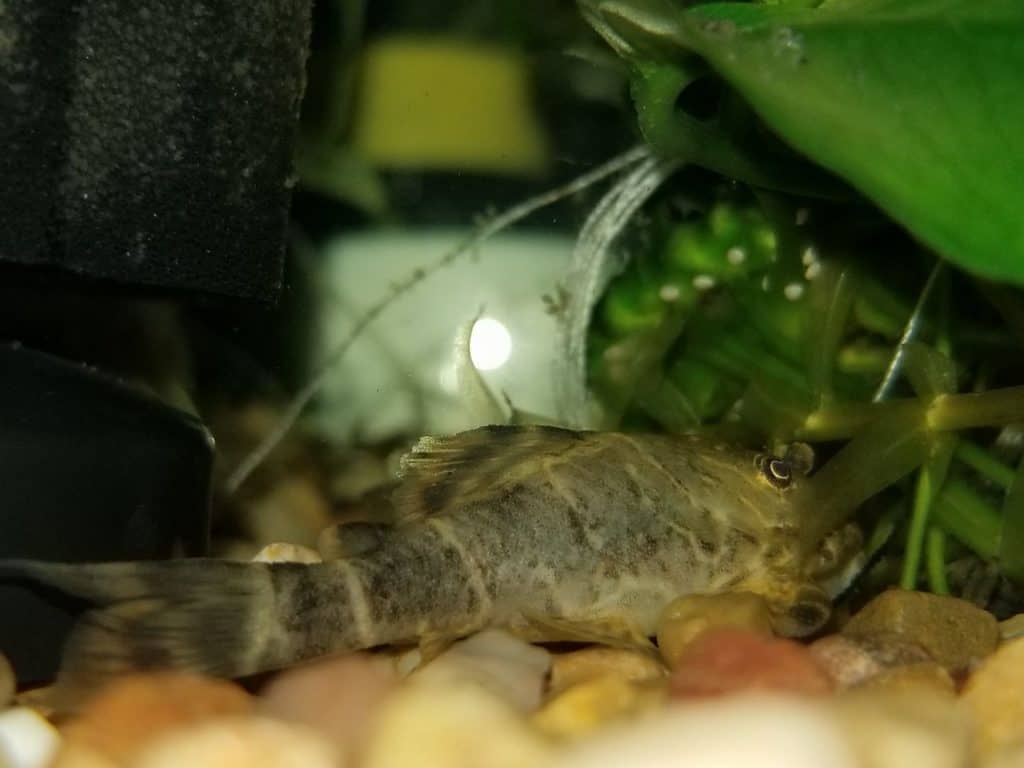Koi are a type of ‘ornamental’ fish endemic to Central Asia, mainly China and Japan. A descendent of the carp species, koi have gained popularity worldwide and are often kept in large tanks or outdoor ponds in North America. If you have koi fish, you may have noticed their colorful scales starting to fall off and are wondering why? Well, I have the answer for you below…
Bacterial or parasitic infections are why koi fish lose their scales. Once the protective ‘slime coating’ is damaged due to stress or illness, ulcers (open sores) will form. Koi will rub their bodies against rocks and other hard surfaces to try and relieve their discomfort which then causes their scales to fall off. Remember that koi fish don’t ‘shed’ scales regularly so losing a lot of them all at once is not natural.
Now that you know the main reason why koi lose their scales, let’s explore this topic in more detail. I’ll explain how disease can physically affect koi fish as well as whether or not their scales can grow back. I’ll also discuss ways to reduce stress in an aquarium, what new scale growth looks like, and how to tell if your koi fish is sick or dying.
So, if you’re ready to learn more about koi fish health and what to do should you notice their scales falling off, then let’s begin!
Why are My Koi Fish Losing Scales?
As mentioned above, koi fish will usually lose their scales as a result of physical stress or illness. Ulcers or open sores will form on the skin when the slime coating (which acts a natural barrier against bacterial and parasitic infections) is damaged.
To provide physical relief, koi will develop ‘flashing’ behavior whereby they’ll rub their bodies against rocks or other surfaces to stop the infectious itch. This will then lead to their scales falling off. If treated properly, scales should grow back once the infection has run its course.
This is probably one of the most important reasons you don’t want to have sharp rocks or edges of any kind in your koi pond or aquarium. If your koi starts rubbing against sharp objects, they’ll create open wounds and may end up killing themselves by accident!
How to Treat Koi Fish Disease?
Treating ulcer disease – which usually results in loss of scales – is different for koi than goldfish. Ulcer disease that’s caused by a parasitic (fluke) or bacterial infection can lead to severe illness, even death, if not medicated as soon as possible.
While potassium permangate is effective for curing both fish species, supaverm (instead of praziquantel) should be used for koi. Placing koi fish in a quarantine or ‘sick’ tank with salted water will also help speed recovery. When all else fails, take your koi fish to an experienced veterinarian for an antibiotic injection.
Check out the following broad spectrum disease treatment available online through Amazon.
Can Koi Fish Scales Grow Back?
Koi are a hardy species of fish and with proper treatment can fully recover after losing their scales, provided the cause is completely eradicated. Once on the mend, koi fish scales will grow back as they begin to regain their health.
The important thing to remember is not to handle fish directly. This will slow down the healing process and possibly damage new scales. Keep them in a sick tank away from other fish and administer proper treatment/medicated food until you notice their physical state improving.
What Does New Scale Growth on Fish Look Like?
When fish scales start to grow back, they usually appear greyish in color. As the layers continue to build, the pigment gradually returns and regains its original hue. Watch that the scales don’t turn black (a sign of ammonia poisoning) or white (a symptom of too little oxygen in the water) as this can then indicate yet another serious health issue.
Scales should begin to grow back once the illness that caused the scaling loss is cured completely. There’s no set time limit for this and depends mainly on how quickly the fish recovers after treatment. Since losing scales is not natural for fish (they don’t ‘shed’ them regularly), you must act immediately if you notice a large number falling off all at once!
I encourage aquarium hobbyists to keep a sick/hospital tank running (just in case) for times like these. The extra time it takes to set-up is well worth it. This can also be the tank you use for quarantining any aggressive koi fish.
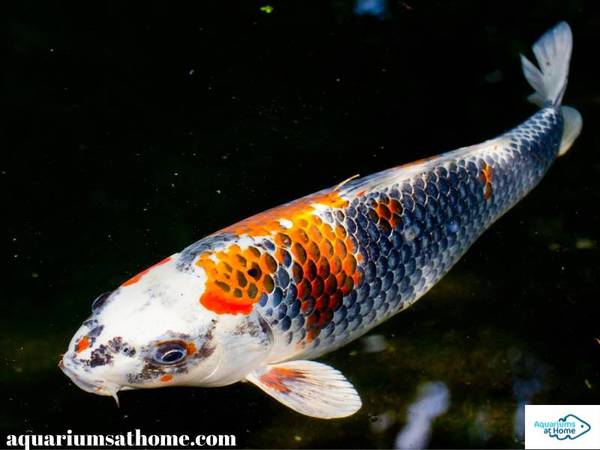
How Do You Stop Koi Fish Stress?
While disease caused by a parasitic or bacterial infection is the usual cause for koi fish losing their scales, stress can also be the culprit. Bullying by other fish and/or poor water conditions can lead to ‘flashing’ behavior such as rubbing on rocks or erratic swimming patterns.
Check the water parameters to ensure the ammonia and nitrite levels are zero or low (1-2). As well, measure the temperature, pH, and salinity of the water to ensure the chemistry is accurate for koi fish. If not, perform a deep water change by removing and replacing at least 50% of the liquid.
What are the Proper Water Conditions for Koi Fish?
Regardless of species, fish health in captivity is a direct result of the aquatic conditions in which they live. To prevent koi fish from becoming ill (which can then lead to ulcers or loss of scales), for example, the ideal water parameters include the following:
Oxygen levels: 5.0 mg/L (minimum) to 18 mg/L (maximum)
PH levels: between 6.8 and 8.2
Ammonia levels: 0 to 2
Nitrite levels: 0 to 0.25
Nitrate levels: 20 to 60 ppm (parts per million)
Salinity levels: 5 ppt (parts per thousand)
Temperature: 65 to 75 degrees Fahrenheit
Since koi grow to be quite large (12 to 15 inches long), adults are best kept in an outdoor pond that’s at least 3 feet deep and contains a minimum of 50 gallons of water per fish. Juveniles can be kept indoors in an aquarium no smaller than 30 gallons.
How Do I Know if My Koi Fish is Dying?
There are many signs/symptoms to alert you of illness (and impending death) when it comes to koi fish. These include the following:
- refusing to eat
- isolating itself from other fish
- sluggish and lethargic swimming behavior
- gasping for air at the surface
- laying motionless on the bottom of the tank
- floating listlessly near the top of the tank
- losing a lot of scales
- red streaks along its fins
- ragged or torn fins kept close to its body
- ulcers or open sores on its body
- white spots on its skin
- fluffy cotton-like tufts or fungus growth on its body
Typical causes for one (or more) of the above behaviors include the following:
- poor water conditions
- bacterial or parasitic infections
- overcrowding the tank
- stress caused by bullying from other fish
- tension related to difficulty from mating or spawning
- the addition of new (possibly sick) fish to the tank
Keep in mind that koi fish tend to be hardy and resilient by nature. If healthy and well cared for, they can live up to 25 years or more in captivity! Should they get sick, it’s likely a serious matter (since they can usually fight off infections naturally) and should be addressed right away.
Conclusion
In summation, koi fish often lose their scales due to illness such as a bacterial or parasitic infection. This causes damage to the skin’s ‘slime coating’ which then results in ulcers or open sores. To elevate the itch and discomfort associated with these sores, koi fish will rub against rocks or other hard surfaces. This behavior known as ‘flashing’ is what ultimately leads to their scales falling off.
I hope this article has provided you with the information you seek about why koi fish lose their scales. Thanks for reading and good luck with your aquarium hobby!
Related Posts
Can Koi Fish Live in a Tank and Survive
How Long Does It Take for Koi to Grow?



